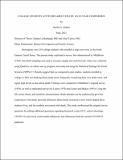COLLEGE STUDENTS ATTITUDES ABOUT DEATH: AN 85-YEAR COMPARISON
Author
Abbott, Karlie G
Abstract
Participants were 216 college students who attended a large university in the South Eastern United States. The present study replicated a survey first administered by Middleton (1936). Snowball sampling was used to increase sample size and diversity. Data were collected using Qualtrics, an online survey program, and analyzed using the Statistical Package for Social Sciences (SPSS) 27. Results suggest that, as compared to past studies, students enrolled in college in 2021 are thinking about death more, frequently visualizing their own death more, and report high levels or fear about death. Findings were compared to Middleton's original survey (1936), as well as replicated surveys by Lester (1970) and Lester and Becker (1993). Using the life course theory and symbolic interactionism, death attitudes can be explained by previous experiences with death, personal influences about death, historical events which shaped these students lives, and the symbols associated with death. This study modernized the original survey questions by adding additional questions regarding historical events (9/11, school shootings, COVID-19, and wars), social media influences, and influences from the current COVID-19 pandemic.
Date
2021-05-06
Citation:
APA:
Abbott, Karlie G.
(May 2021).
COLLEGE STUDENTS ATTITUDES ABOUT DEATH: AN 85-YEAR COMPARISON
(Master's Thesis, East Carolina University). Retrieved from the Scholarship.
(http://hdl.handle.net/10342/9058.)
MLA:
Abbott, Karlie G.
COLLEGE STUDENTS ATTITUDES ABOUT DEATH: AN 85-YEAR COMPARISON.
Master's Thesis. East Carolina University,
May 2021. The Scholarship.
http://hdl.handle.net/10342/9058.
June 29, 2024.
Chicago:
Abbott, Karlie G,
“COLLEGE STUDENTS ATTITUDES ABOUT DEATH: AN 85-YEAR COMPARISON”
(Master's Thesis., East Carolina University,
May 2021).
AMA:
Abbott, Karlie G.
COLLEGE STUDENTS ATTITUDES ABOUT DEATH: AN 85-YEAR COMPARISON
[Master's Thesis]. Greenville, NC: East Carolina University;
May 2021.
Collections
Publisher
East Carolina University

